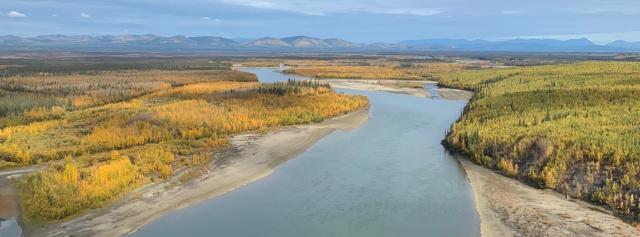Bureau of Land Management Releases Supplemental Environmental Review for Ambler Road Proposal
Organization:
BLM Office:
Media Contact:
ANCHORAGE – Today, the Bureau of Land Management’s Alaska State Office released the draft supplemental environmental impact statement (EIS) evaluating the Ambler Road project proposed by the Alaska Industrial Development and Export Authority (AIDEA). The updated document responds to a remand by the U.S. District Court for the District of Alaska based on identified deficiencies in the 2020 environmental analysis for the proposed road, including inadequate analysis of subsistence impacts under the Alaska National Interest Lands Conservation Act.
The draft supplemental EIS released today analyzes the same three route alternatives for the proposed road from the 2020 environmental analysis, as well as a no action alternative under which the road would not be permitted. No preferred alternative is identified.
The updated analysis identifies 66 communities whose subsistence activities could be potentially impacted, finding that any road alternative may significantly restrict subsistence uses in nearly half of these communities. This expands the number of communities considered from 27 in the 2020 analysis. The draft supplemental EIS also contains updated information on potential impacts of the proposed road to caribou and fish populations, and expands incorporation of Indigenous Knowledge gained through consultations, ethnographic interviews, comment letters and testimony, and Regional Advisory Council meetings. Mining activity and future potential public use of the road are identified and analyzed as reasonably foreseeable, a term that is defined in the National Environmental Policy Act (NEPA) and its implementing regulations and guidance.
“The latest draft includes additional data and analysis informed by robust Tribal consultation and cooperation, on-the-ground perspectives, and public input,” said BLM Alaska State Director Steve Cohn. “We appreciate the hard work of BLM staff and our partners, and the many Alaska Native Tribes, Corporations and stakeholders who engaged in this updated process. Continued public input and engagement on this draft is critical to ensuring our analysis captures the proposed road’s potential impacts.”
AIDEA proposed Ambler Road to connect the Dalton Highway, which runs from north of Fairbanks up to Deadhorse, to the Ambler Mining District located in northwest Alaska. The proposed route would traverse more than 200 miles across lands managed by the BLM, state of Alaska, Alaska Native Corporations, and through the Gates of the Arctic National Park and Preserve, managed by the National Park Service.
The public has 60-days from publication of the draft supplemental EIS in the Federal Register, which is scheduled for next week, to provide comments. The BLM will post the schedule for public meetings, subsistence hearings and other engagement opportunities on the BLM National NEPA Register in the coming days. The BLM will review and consider all input before publishing a final supplemental EIS. The BLM will continue to consult with Alaska Native Tribes and Corporations throughout this process.
For more information on this project, please contact the BLM Project Manager Stacie McIntosh at 907-474-2398, 1-800-437-7021 or [email protected].
-BLM-
Bureau Of Land Management, Fairbanks District Office, 222 University Avenue, Fairbanks, AK 99709
Need public domain imagery to complement news coverage of the BLM in Alaska? Visit our Flickr channel!
Learn more at www.blm.gov/Alaska, and on Facebook, Instagram, Twitter, and YouTube.
The BLM manages about 245 million acres of public land located primarily in 12 western states, including Alaska, on behalf of the American people. The BLM also administers 700 million acres of sub-surface mineral estate throughout the nation. Our mission is to sustain the health, diversity, and productivity of America’s public lands for the use and enjoyment of present and future generations.

